For a concave mirror, graph of square of lateral magnification and image distance from pole is given for a short real object placed on principal axis perpendicular to it with one end on it. Choose the CORRECT statement(s).
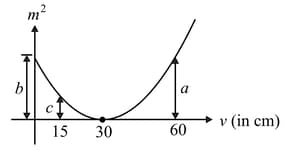

Important Questions on Ray Optics
A point source of light, is placed at a distance in front of the center of plane mirror of width which is hanging vertically on a wall. A man walks in front of the mirror along a line parallel to the mirror, at a distance as shown below. The distance over which the man can see the image of the light source in the mirror is:
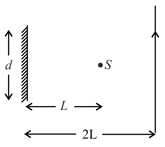
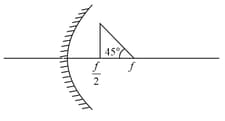

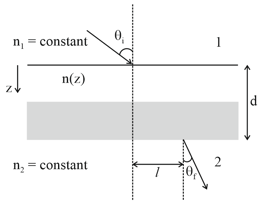
A transparent thin film of uniform thickness and refractive index is coated on the convex spherical surface of radius R at one end of a long solid glass cylinder of refractive index , as shown in the figure. Rays of light parallel to the axis of the cylinder traversing through the film from air to glass get focused at distance f1 from the film, while rays of light traversing from glass to air get focused at distance f2 from the film. Then
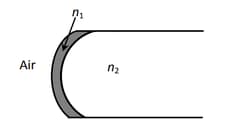
A hemispherical glass body of radius 10 cm and refractive index 1.5 is silvered on its curved surface. A small air bubble is 6 cm below the flat surface inside it along the axis. The position of the image of the air bubble made by the mirror is seen :
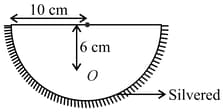
| Column 1 | Column 2 | ||
| (A) | (a) | Convex mirror | |
| (B) | (b) | Concave mirror | |
| (C) | (c) | Real image | |
| (D) | (d) | Virtual image |
(Graphs are drawn schematically and are not to scale)

